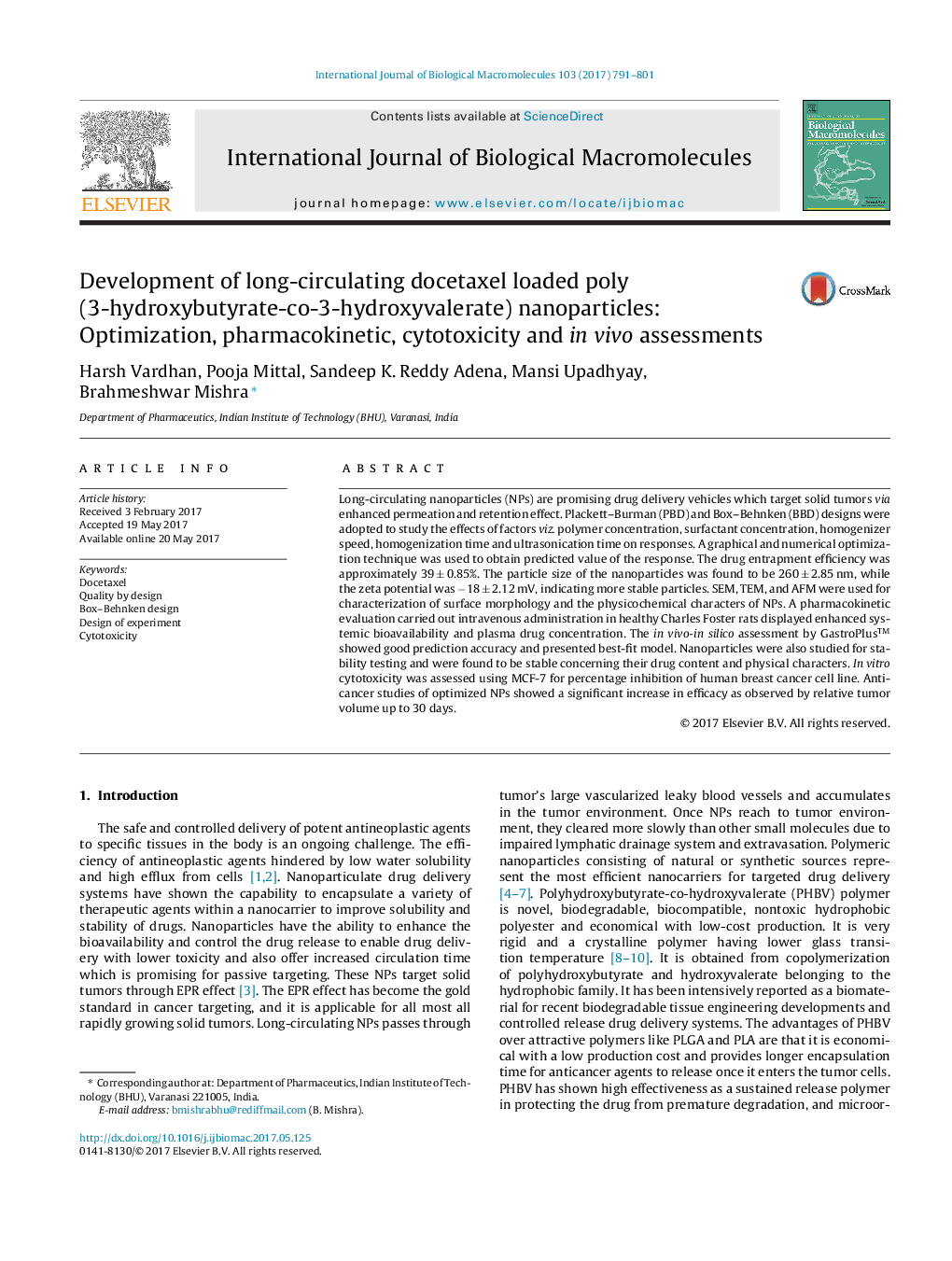| Article ID | Journal | Published Year | Pages | File Type |
|---|---|---|---|---|
| 5511913 | International Journal of Biological Macromolecules | 2017 | 11 Pages |
Long-circulating nanoparticles (NPs) are promising drug delivery vehicles which target solid tumors via enhanced permeation and retention effect. Plackett-Burman (PBD) and Box-Behnken (BBD) designs were adopted to study the effects of factors viz. polymer concentration, surfactant concentration, homogenizer speed, homogenization time and ultrasonication time on responses. A graphical and numerical optimization technique was used to obtain predicted value of the response. The drug entrapment efficiency was approximately 39 ± 0.85%. The particle size of the nanoparticles was found to be 260 ± 2.85 nm, while the zeta potential was â18 ± 2.12 mV, indicating more stable particles. SEM, TEM, and AFM were used for characterization of surface morphology and the physicochemical characters of NPs. A pharmacokinetic evaluation carried out intravenous administration in healthy Charles Foster rats displayed enhanced systemic bioavailability and plasma drug concentration. The in vivo-in silico assessment by GastroPlus⢠showed good prediction accuracy and presented best-fit model. Nanoparticles were also studied for stability testing and were found to be stable concerning their drug content and physical characters. In vitro cytotoxicity was assessed using MCF-7 for percentage inhibition of human breast cancer cell line. Anticancer studies of optimized NPs showed a significant increase in efficacy as observed by relative tumor volume up to 30 days.
